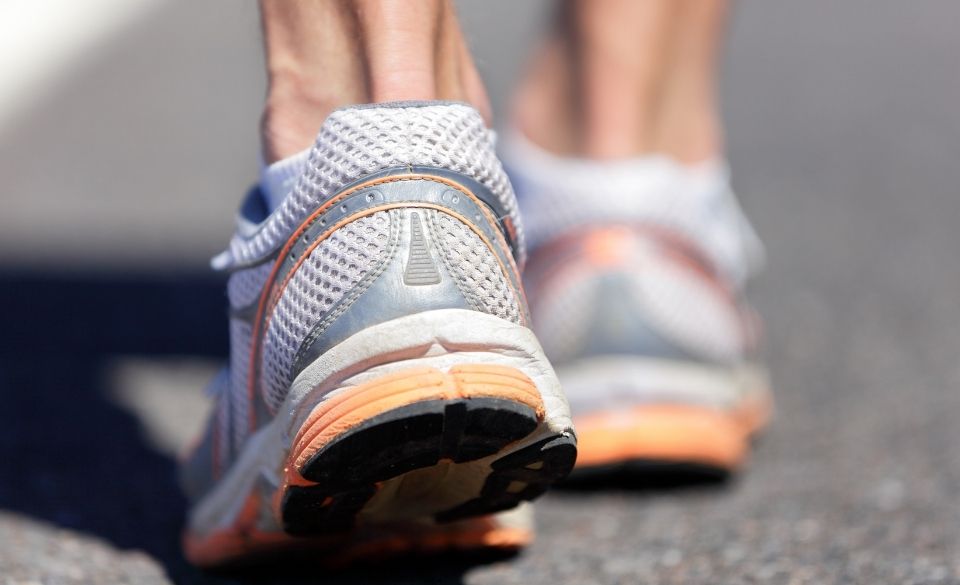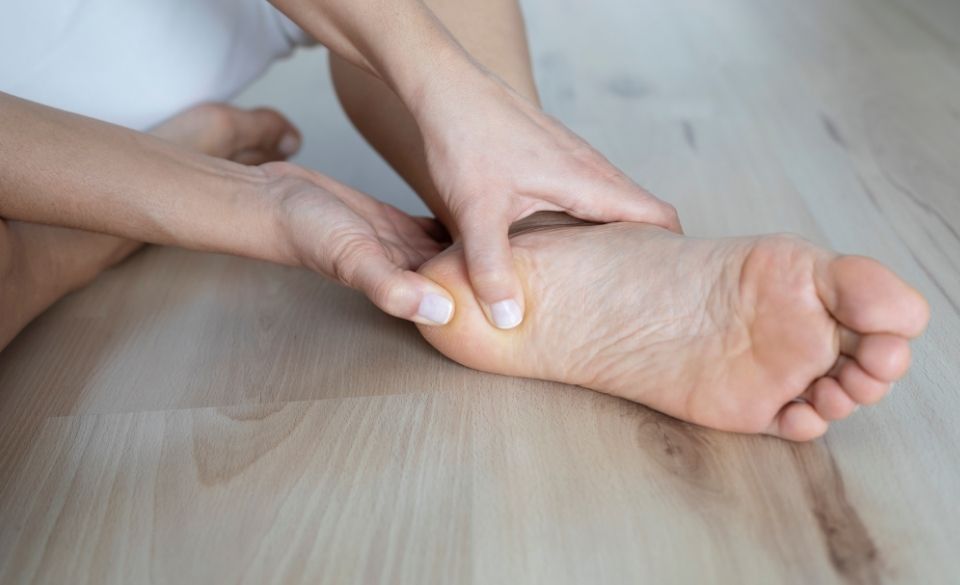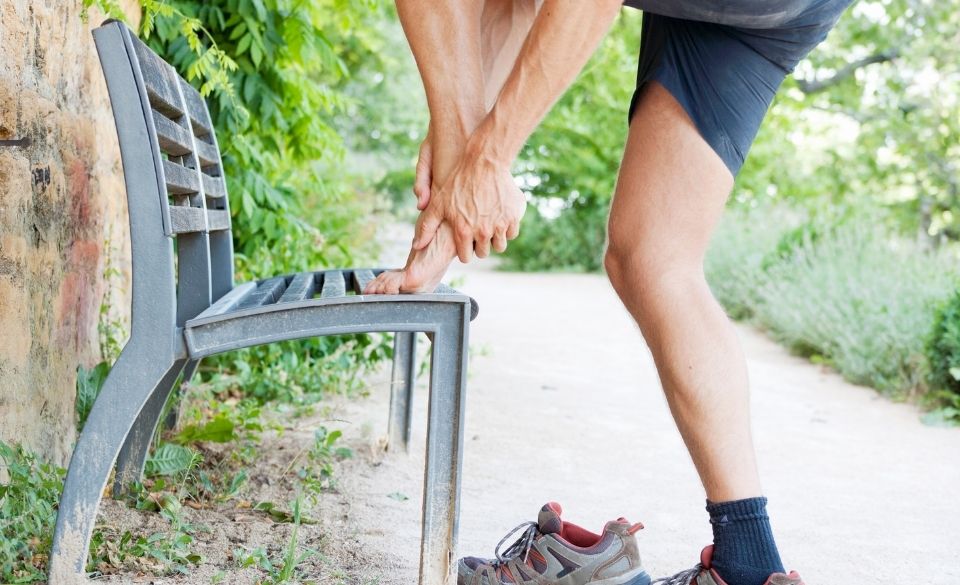
How to Prevent, Heal & Recover From Heel Spurs – UPDATED 2022
Page Contents
Runners with heel spurs experience pain in the heel of their foot. This is caused by pressure on the plantar fascia and it can be excruciatingly painful when moving around.
Because running is one of the most effective workouts for getting in shape and improving fitness. It’s not uncommon that many people experience heel spurs when running or exercising.
However, continuing to run and train can be difficult when you’re struggling with heel spurs. Taking time off for a full recovery is the fastest way to recover. But many runners still wonder if it is possible to run with heel spurs or not.
In this article we look at what causes heel spurs, how do you prevent them, and what you can do to speed up the recovery and reduce heel pain when running.
So continue on reading to find out more!
What are Heel Spurs and Why Do I Get Them?
A heel spur is a calcareous deposition on the bottom of the heel bone that causes bony outgrowth and calcium deposits. This usually occurs over a period of weeks and months. and can usually be diagnosed via an X-ray.
Most commonly found on the inner side of the heel and tend to cause pain, swelling, and inflammation. A heel spur is a bony outgrowth on the inside of the foot. It is usually caused by trauma to the plantar fascia and can be painful and lead to long-term damage if untreated. It is also commonly known to cause Plantar fasciitis, which is swelling of the plantar fascia. Since both types of injuries are caused by overtraining it is relatively common in runners, triathletes, and people who exercise.

What Causes Heel Spurs in Runners?
Long-term muscular and ligament strain is the direct cause of heel spurs. Spurs form due to this severe tension on the bone located in the heel (calcaneus).
Heel Spurs usually take many months to form, so they don’t come directly after a run or another form of exercise. If you neglect early heel pain and continue to run, you increase the chances of developing heel spurs.
Heel spurs are caused by repetitive stress from running, sprinting, or leaping on hard surfaces. They can cause pain, prevent weight bearing exercising, and lead to more severe problems. 80% of all people with heel spurs will develop plantar fasciitis. Therefore, it is essential to know how to spot heel spurs start to treat them as early as possible.
Even though incorrect running shoes are usually the biggest cause of spurs, it is important to know what else can cause pain in your heal.
The following factors can also cause heel spurs:
– Extra body weight
– Arthritis
– Bruising of the heel
– Running gait
– Strain on foot muscles
– Tearing of the membrane that covers the heel bone
– Stretching of the plantar fascia
There are some risk factors to look at, including:
– Running shoes with inadequate padding and support
– Anomalies of gait that impact foot strike
– Overweight or excess weight gain
– Increase in running mileage
– Running on rough or uneven terrain
– Diabetes
– Aging
– Running posture abnormalities, mainly when the muscles in the foot are overworked.
– Having flat feet or a high arch

How to Treat Heel Spurs & Prevent Them From Returning?
It is important to have a diagnosis and treatment plan in place if you are experiencing heel spurs. Specific lifestyle changes and over-the-counter medication can help reduce pain. However, it is important to see a physiotherapist or doctor that can help find the root cause.
The best way to treat a heel spur is by wearing proper footwear – not sandals or flip-flops or worn running shoes.
Physiotherapy, custom-made orthotics, anti-inflammatory medicines, and cortisone infusions are all ways to treat heel spurs. However, if non-surgical options fail, one may require surgical treatment.
Other forms of treatment that are used to help recover are:
– Cold compression therapy.
– Orthotics to help running gait
– Over-the-counter medications
– Regular stretching of the foot and lower leg muscles
– Ultrasound treatment
– Corticosteroid injections
Tips for Getting Rid of Heel Spurs
Since it is a common foot condition that many runners experience, there are luckily many tips to help prevent and get rid of the pain you will experience in the heel.
Since they usually occur on the plantar surface of the foot, it is important to warm up the foot before running. That means the best way to avoid Heel spur is to walk briefly before you go for your morning jog. This can be anywhere from 10-15 minutes.
If you do this it will help blood flow around the foot and warm up the tendons and ligaments before your run.
Another way to eliminate heel spurs is to have them surgically removed. But, this is usually a last-minute resort and you should first look at alternative treatments and exercises. Such as:
To ease muscle tension in the heels and legs, a physician may well be able to offer some stretching exercises. If these don’t work, they may recommend you to a physiotherapist to create a customized workout plan to relieve heel discomfort.
NSAIDs (nonsteroidal anti-inflammatory drugs): OTC pharmaceuticals like aspirin and ibuprofen can assist with intense pain, but they are not suitable for long-term pain treatment.
Cold therapy can help with foot discomfort by numbing the area and reducing swelling. Applying ice packs or rubbing the heel over an icy bottle of water for twenty minutes will aid. You can do this 3 – 4 times per day.
Exercises that cause a person’s foot to strike a hard surface might aggravate the heel more. So it is important to reduce any activity that requires weight on the heel.
Another method for relieving pain is massage. This not only feels amazing, but it also helps to relieve heel pain and increase blood flow to the area. Luckily, you don’t need to go to a masseuse, as massage can be performed at home by gently stroking your thumb into the affected area. Then gradually increase the pressure until you can go deep into the muscle. Just be careful not to apply excess stress, or you’ll end up inflicting more agony.



